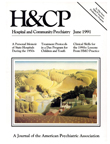A Personal Memoir of the State Hospitals of the 1950s
Abstract
The author recalls his experiences as an attendant at a state mental hospital in the early 1950s, before the introduction of psychotropic drugs. State hospitals of that era served not only as treatment centers for mentally ill patients but also as de facto nursing homes, retirement homes, orphanages, and shelters for chronic physically ill persons, medically ill poor people and wards of the state, adults and juveniles convicted of crimes, behaviorally disturbed retarded people, and alcoholics. The author argues that the deinstitutionalization movement removed an important, if unrecognized, source of palliative care for dispossessed individuals and recommends redesigning the state hospital to provide compassionate housing and treatment by trained persons for homeless and chronic physically and mentally ill individuals. Four patients typical of the heterogenous population of state hospitals in the 1950s are described.
Access content
To read the fulltext, please use one of the options below to sign in or purchase access.- Personal login
- Institutional Login
- Sign in via OpenAthens
- Register for access
-
Please login/register if you wish to pair your device and check access availability.
Not a subscriber?
PsychiatryOnline subscription options offer access to the DSM-5 library, books, journals, CME, and patient resources. This all-in-one virtual library provides psychiatrists and mental health professionals with key resources for diagnosis, treatment, research, and professional development.
Need more help? PsychiatryOnline Customer Service may be reached by emailing [email protected] or by calling 800-368-5777 (in the U.S.) or 703-907-7322 (outside the U.S.).



